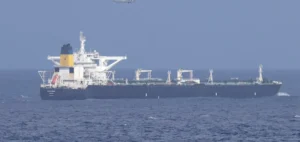Oil prices rose further on Monday after a technical meeting of the Organization of the Petroleum Exporting Countries and their allies (Opec+), following the announcement by several members of a significant cut in their crude production.
Around 12:15 GMT (14:15 in Paris), the barrel of Brent North Sea for delivery in June, which is the first day of use as a reference contract, took 6.38% to 84.99 dollars. Its U.S. equivalent, a barrel of West Texas Intermediate (WTI), for delivery in May, gained 6.29% to 80.43 dollars. On both sides of the Atlantic, prices are on track for their biggest daily increases since the surges of the first weeks of the Russian invasion of Ukraine a year earlier.
Opec+ on Monday took note of voluntary production adjustments by several major oil exporting countries announced on Sunday, following a video conference meeting of the group’s Joint Ministerial Monitoring Committee (JMMC). The alliance observed that this is “a precautionary measure to support the stability of the oil market,” it said in a statement. The cuts signal that “the group is prepared to defend a floor price well above $80 a barrel and prioritize revenues,” says Jorge Leon of Rystad Energy.
Eight countries – Iraq, Algeria, Saudi Arabia, the United Arab Emirates, Oman, Kuwait, Kazakhstan and Gabon – have decided to reduce their production by more than one million barrels per day from May until the end of the year. Riyadh will cut its production by 500,000 bpd, Iraq by 211,000 bpd, the Emirates by 144,000 bpd, Kuwait by 128,000 bpd, Kazakhstan by 78,000 bpd, Algeria by 48,000 bpd, Oman by 40,000 bpd and Gabon by 8,000 bpd, the Opec said in its statement.
Russia, for its part, indicated on Sunday that it would extend until the end of the year its previously announced crude oil production cut of 500,000 barrels. “With the end of the banking crisis and the return of confidence to the markets, the price of oil was already showing signs of recovery, and the announcement (by some Opec+ countries) reinforced this momentum, bringing oil prices back to pre-banking crisis levels,” says Ricardo Evangelista, analyst at ActivTrades.
The recent banking crisis had indeed weighed heavily on oil and commodity prices, with investors preferring to stay away from riskier, more volatile assets in times of uncertainty. In mid-March, both crude references had fallen to their lowest levels in over a year. Especially since “most of the cuts will be made by countries that produce at or above the quotas” imposed by Opec+, which implies “real reductions in supply” and a tightening of the market, explain DNB analysts.






















